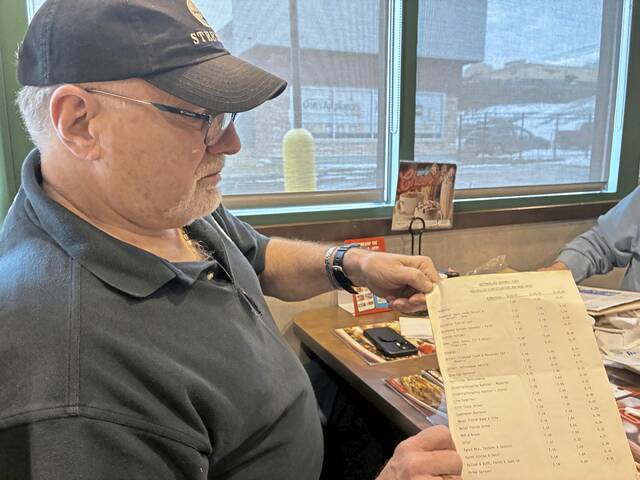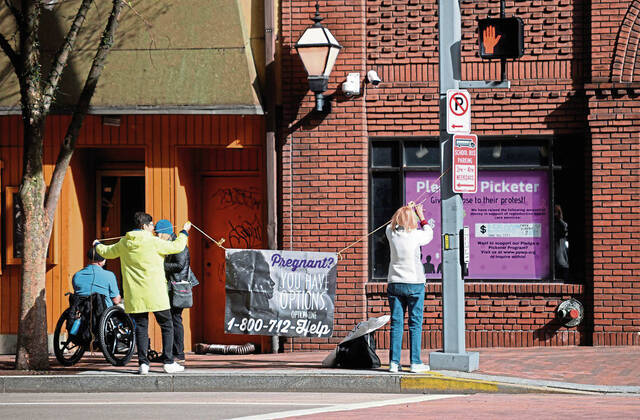Speal’s on Wheels was one of the first food trucks to operate in Greensburg, with owner Terry Speal serving late-night grub to college crowds in the city since 2016.
High registration fees and limited hours kept most food truck operators out, but that just meant less competition for Speal.
“The old regulations worked out for me, because nobody wanted to pay that fee, so I was doing OK,” he said. “I think I was the only one in town.”
City officials hoped more food trucks would come, but most avoided Greensburg, plying their trade in less-restrictive communities.
“We didn’t get the volume that we thought we might,” said city councilman Randy Finfrock.
That’s why council this week updated its food truck ordinance, removing many of the strict rules that have been in place since 2016.
“We wanted to change the ordinance to make it easier for food trucks to set up in our downtown area,” said councilman Gregory Mertz.
The 2016 ordinance limited trucks operating on city streets to between 10:30 p.m. and 3 a.m., and mandated those operating on private property be at least 500 feet from brick-and-mortar restaurants — which essentially banned trucks from most of the city.
Food trucks must now set up at least 100 feet from an existing restaurant.
The new ordinance allows food trucks to operate on city streets for up to eight hours at a time, except for certain overnight and early morning hours.
“At 10 o’clock at night, you’re not bringing people into downtown Greensburg for some kind of festival, or a food truck setup,” Mertz said.
The city had an annual registration fee of $1,200, though it was cut by half last year.
The ordinance cut the annual registration fee again, this time to $400. It retains the $35 single-day permit introduced last year, as well as permits for farmers markets and other special events.
Council members agreed on most aspects of the new ordinance, but the distance limits led to prolonged debate. Some members wanted to allow food trucks anywhere, while others worried they would threaten traditional restaurants.
In the end, council put two versions of the ordinance up for a vote Monday. One set the minimum distance at 100 feet, the other at 200.
The shorter limit passed 3-2, with Mayor Robert Bell and councilwoman Cheryl Lennert opposed.
“We both had gone out and talked to some of the brick-and-mortar owners, and, based on their feedback, we felt our vote against the 100-foot restriction might not have been the popular position, but, we felt it was the right position to take at this point in time,” Bell said in an email.
Despite disagreeing with the distance limit, Bell said he is otherwise happy with the ordinance.
“I’m hoping that we can attract food trucks, and ultimately, the food trucks will bring more people into the downtown business district by offering more dining options,” he said.
Finfrock said he thinks food trucks and restaurants aren’t direct competitors.
“While they’re related to restaurants, they really don’t have the same clientele,” he said.
The looser restrictions will make the economic pie bigger, not force competition over the same slice, he said.
Research firm IBISWorld found that the $1 billion food truck industry in the United States last year had nearly 24,000 trucks nationwide, with a key target market of middle-class millennial, according to the Small Business Development Center. Some 43% of business comes from people between the ages of 24 and 44, with less than 20% coming from those under 25 (19.7%), ages 45 to 54 (17.7%) and 55 or older (19.2%).
Key target market segments also are active social media users, researchers found.
By comparison, the more than 1 million restaurant locations in the United States last year were predicted to generate around $863 billion in revenue, according to the National Restaurant Association. In Pennsylvania, that includes more than 26,000 eating and drinking locations that generate an estimated $24 billion in annual revenue, according to the latest figures available from the Washington, D.C.-based trade group.
Council may revisit Greensburg’s food truck ordinance again if necessary, Finfrock said.
“We want to evolve, we want to adapt and we want to change,” he said. “Just because this is the ordinance today doesn’t mean it will be the ordinance next year.”
Speal said he welcomes the new rules, even if it might mean more competition.
“It’s nice to see that they’re going to make some leeway, open it up a little bit,” he said. “We’ll see if other trucks will come in though.”
He thinks the $400 fee might still keep many food trucks away.
“They get scared at ($1,200), they might still be scared of it,” he said.








